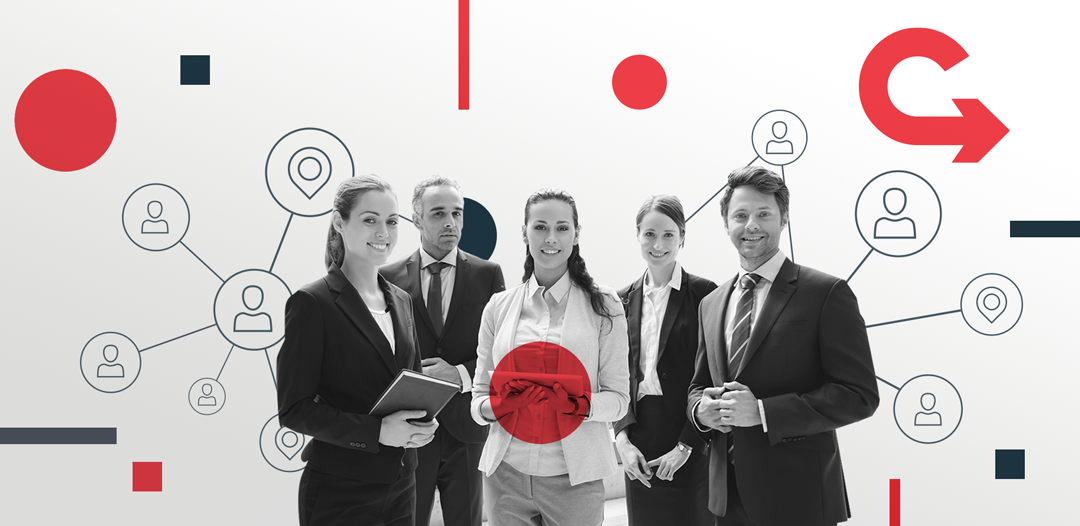Interesting facts, Practical Advice, ServiceNow, Technology, Work Strategies
5 ways to integrate IT and Human Resources areas.

September 6, 2021
The employee experience is at the center of today’s enterprise. Whether it’s process, technology, infrastructure or innovation, lines of business from IT to HR and beyond are addressing issues by putting the employee and customer experience first. The same is true of executives. CIOs and
CHROs are adopting a transformative mindset—one that will require HR and IT to partner closely to deliver experiences that enhance the digital, human, and physical employee journey.
ServiceNow identified five ways organizations can partner across IT and HR to foster a transformative mindset and deliver great employee experiences:
1. Build and structure new work teams
Designing for a successful workplace strategy requires a cultural shift between HR, IT, and facilities. The idea is to define new skills and talent as well as structure teams in a way that encourages ideation and allows for work to flow between groups.
Upping the game, talent, and responsibilities in shared services
To foster better working relationships and align on experience goals, organizations are redesigning existing decentralized service delivery models under a global experiences function for HR, IT, payroll, and other people services. The scope of HR shared services or “people enablement” is also evolving well beyond routine transaction activities.
Data scientists and experience officers
Workplace transformation is equal parts technology, talent, and change. And to successfully implement new technology, companies must train and enable a team that looks after that technology. This is why new roles with deeper skills such as data scientists and experience officers have been added within IT, focusing not only on UI but also on how technology makes people feel. With connectivity being a vital component of the workplace experience, organizations
are creating new global HR technology teams focused on architecting the use and mobility of HR software, applications, and systems that interface regularly with their IT counterparts.
2. Make technology decisions together
According to Gartner, “By 2022, 75% of organizations will include employee experience improvement as a performance objective for HR and IT groups.” To keep up, companies are steadily adopting cloud-based solutions and other technologies to deliver digital, enterprise-grade systems to the workforce. But that adoption has left IT and HR struggling to understand how these systems add value to the employee experience. Meanwhile, employees have
become overwhelmed with multiple systems.
IT and HR now have a growing priority to ensure new technologies not only address complex business issues, but simultaneously meet the expectations of people who use them.
3. Optimize employee service with a single digital experience platform
Organizations with a employee-centric vision are shutting downnwebsites and email and increasing self-service with a single, digitally driven employee service center. According to Gartner, “Some organizations have taken the step of combining their HR service function with other employee-facing support services, such as IT, procurement, or expenses, to create one extended employee service center. The formation of a “one-stop shop” is intended to simplify the employee’s experience by removing the burden of deciphering multiple processes and systems. This is one example of a move toward a more employee-centric model.”
A digital experience platform becomes the central touchpoint across the workforce and enables departments such as HR and IT to deliver a consistent service experience and retain their unique
departmental requirements and workflows.
4. Go beyond automating tasks and design for the end-user experience
Transforming the employee experience isn’t just automating tasks or addressing individual inquiries. It’s about identifying and reimagining moments in the employee journey that can have an overwhelmingly positive—or equally negative—impact on the enduser. According to employee experience experts Dan and Chip Heath , great experiences hinge on “peak” moments.
There are several of these peak moments where HR and IT can partner to create experiences inclusive of human, physical, and digital touchpoints. According to Dan and Chip, when it comes to using technology, one needs to ask, “Is the technology boosting responsiveness or limiting it?
5. Listen, design, test, iterate
To attract, retain, and engage the best talent, the pendulum is swinging away from what HR thinks employees want and towards what employees actually want. Companies seeking to put people at the center of their organization are introducing feedback channels to build trust and capture the voice of the customer. With the use of employee pulse surveys, suggestion boxes, open forum discussions, and employee design thinking workshops, HR and IT departments are prioritizing the customer journey as the initial step in transforming their employee experience
Share
Share on linkedin
Share on facebook
Share on email
Share on twitter
Rate
Leave a comment
19151
Other News
Get News Updates and Success Stories
Subscribe to our Newsletter.
Look For Us on Social Networks
Hmm, that e-mail doesn't look good, check the format.
Look For Us on Social Network
Look For Us on Social Networks
By browsing this site you accept our cookies use policies.
ServiceNow, the ServiceNow logo, Now, Now Platform, and other ServiceNow marks are trademarks and/or registered trademarks of ServiceNow, lnc. in the United States and/or other countries. Other company and product names may be trademarks of the respective companies with which they are associated.
